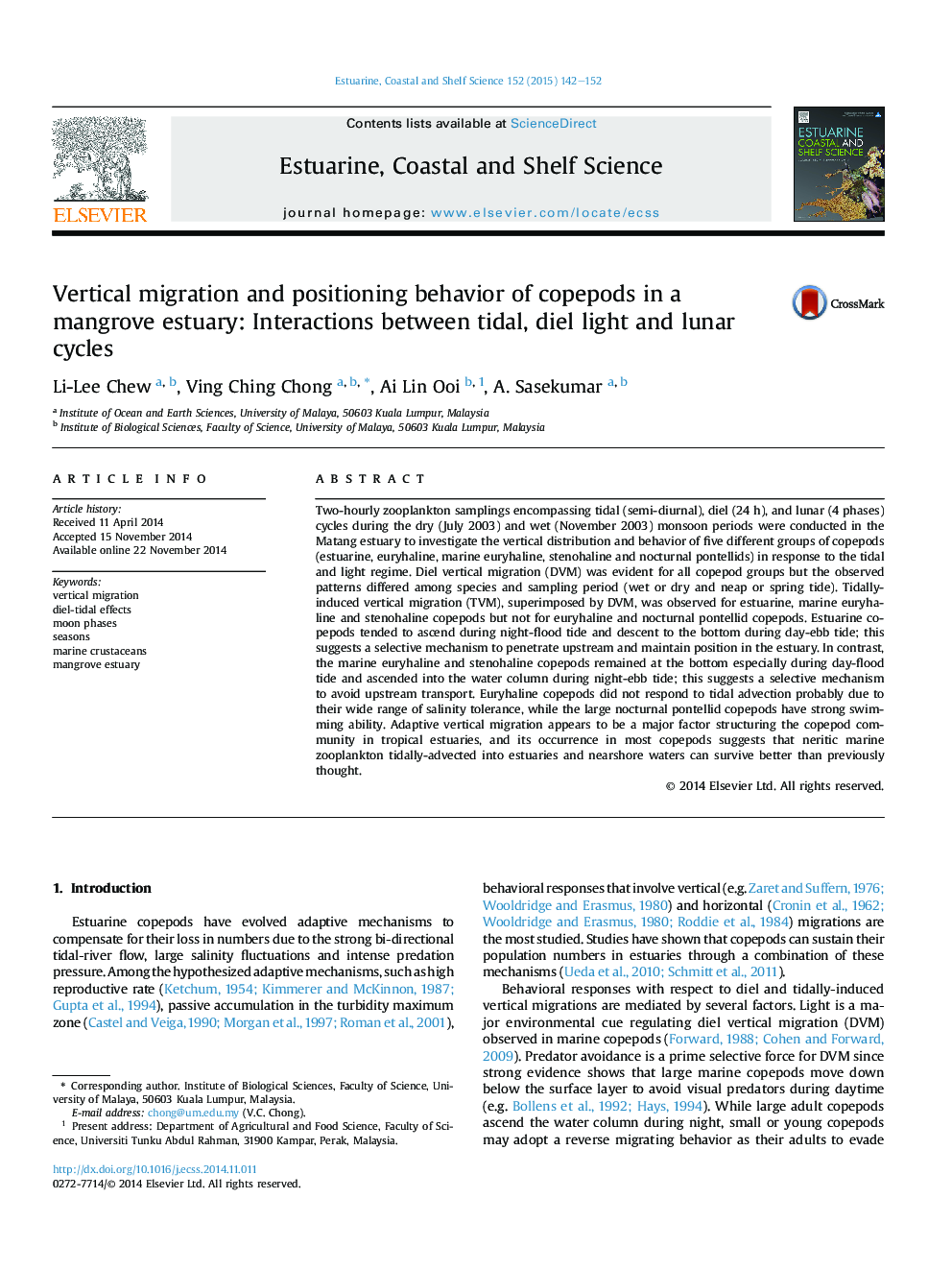| کد مقاله | کد نشریه | سال انتشار | مقاله انگلیسی | نسخه تمام متن |
|---|---|---|---|---|
| 4539554 | 1626644 | 2015 | 11 صفحه PDF | دانلود رایگان |
• Adaptive vertical migration structures the copepod community in tropical estuaries.
• Vertical migration occurs in tandem with the diel-tidal cycle (DTC).
• Moon phase and monsoon season may accentuate vertical migration.
• Copepod species differing in salinity tolerance respond variably to DTC.
• Their positioning behaviour determines retention or displacement in the estuary.
Two-hourly zooplankton samplings encompassing tidal (semi-diurnal), diel (24 h), and lunar (4 phases) cycles during the dry (July 2003) and wet (November 2003) monsoon periods were conducted in the Matang estuary to investigate the vertical distribution and behavior of five different groups of copepods (estuarine, euryhaline, marine euryhaline, stenohaline and nocturnal pontellids) in response to the tidal and light regime. Diel vertical migration (DVM) was evident for all copepod groups but the observed patterns differed among species and sampling period (wet or dry and neap or spring tide). Tidally-induced vertical migration (TVM), superimposed by DVM, was observed for estuarine, marine euryhaline and stenohaline copepods but not for euryhaline and nocturnal pontellid copepods. Estuarine copepods tended to ascend during night-flood tide and descent to the bottom during day-ebb tide; this suggests a selective mechanism to penetrate upstream and maintain position in the estuary. In contrast, the marine euryhaline and stenohaline copepods remained at the bottom especially during day-flood tide and ascended into the water column during night-ebb tide; this suggests a selective mechanism to avoid upstream transport. Euryhaline copepods did not respond to tidal advection probably due to their wide range of salinity tolerance, while the large nocturnal pontellid copepods have strong swimming ability. Adaptive vertical migration appears to be a major factor structuring the copepod community in tropical estuaries, and its occurrence in most copepods suggests that neritic marine zooplankton tidally-advected into estuaries and nearshore waters can survive better than previously thought.
Figure optionsDownload high-quality image (135 K)Download as PowerPoint slide
Journal: Estuarine, Coastal and Shelf Science - Volume 152, 5 January 2015, Pages 142–152
